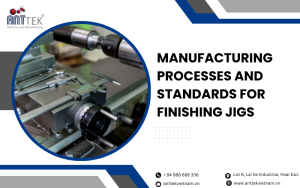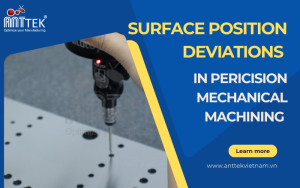What is Knurling? The Versatile Applications of Knurling Across Industries
In the realm of CNC machining, precision is paramount. Each cut, each groove, and each texture must be meticulously crafted to exact specifications. Among the myriad techniques employed in CNC machining, knurling stands out as a method for adding texture and grip to cylindrical surfaces. Let’s delve into what knurling is, its applications, and how it is accomplished in CNC machining.
What is Knurling?
Knurling is a manufacturing process used to create a pattern of straight, angled, or crossed lines on the surface of a workpiece, typically cylindrical in shape. This pattern enhances grip, facilitates assembly, or simply adds aesthetic appeal to the part. Knurling can be found on a wide array of products, from tools and machinery components to consumer goods like knobs and handles.
Types of Knurling
Straight Knurling

- Straight knurling is characterized by straight lines running parallel to the axis of the workpiece. These lines can be uniform in depth and spacing or varied depending on the specific requirements of the application.
- Applications: Straight knurling is often employed in applications where a simple and functional grip is sufficient. It is commonly found on tool handles, knobs, and other components where a basic yet effective grip is needed.
- Advantages: Straight knurling is relatively easy to produce and can be achieved with a wide range of knurling tools. It provides a consistent grip along the length of the workpiece, making it suitable for many practical applications.
Diamond Knurling
- Description: Diamond knurling creates a diamond-shaped pattern on the surface of the workpiece. This pattern consists of diagonal lines intersecting at a 45-degree angle, forming a series of diamond shapes.
- Applications: Diamond knurling offers enhanced grip compared to straight knurling, making it suitable for applications where a stronger grip is required. It is commonly used on handles, grips, and other components subjected to higher levels of stress or torque.
- Advantages: Diamond knurling provides a more secure grip due to the interlocking diamond shapes, reducing the risk of slippage. It offers a visually appealing texture that adds a decorative element to the workpiece.

Crossed Knurling
- Description: Crossed knurling features intersecting diagonal lines, creating a crisscross pattern on the surface of the workpiece. These lines typically form a grid-like pattern with equal spacing between each line.
- Applications: Crossed knurling provides excellent grip in multiple directions, making it suitable for applications where grip is critical from various angles. It is commonly used on components such as handwheels, pulleys, and machinery parts where operators may need to apply force from different orientations.
- Advantages: Crossed knurling offers superior grip compared to straight or diamond knurling, particularly when forces are applied in multiple directions. The grid-like pattern adds a distinctive aesthetic appeal to the workpiece, making it stand out visually.

Applications of Knurling
Hand Tools and Machinery Components
- Knurling is extensively used on hand tools and machinery components to enhance grip, especially in applications where operators need to handle tools securely, even in slippery or oily conditions.
- Applications: Wrenches, screwdrivers, and pliers often feature knurled handles to provide a secure grip, preventing slipping and improving user control. Knurled knobs and handles on machinery components allow operators to adjust settings or operate machinery with ease, even when wearing gloves.
Consumer Goods
- Knurling is commonly used in the design of consumer goods to improve functionality, aesthetics, and user experience.
- Applications: Knurled surfaces on pens and pencils provide a comfortable and non-slip grip, enhancing writing precision and control. Lighters often feature knurled knobs for easy adjustment of flame intensity, allowing users to fine-tune their experience. Knurled surfaces on smartphone cases or camera grips improve handling and reduce the risk of accidental drops.
Automotive and Aerospace Components
- Knurling is utilized in the automotive and aerospace industries to improve the performance, functionality, and safety of critical components.
- Applications: Knurled surfaces on engine components, such as pulleys and crankshafts, provide a secure grip for belts and other drive systems, ensuring reliable power transmission. Aerospace fasteners, such as nuts and bolts, may feature knurled surfaces to facilitate installation and removal, even in challenging environments like aircraft interiors or engine compartments.
Medical Devices and Instruments
- Knurling is employed in the design of medical devices and instruments to improve handling, ergonomics, and user control during surgical procedures and medical treatments.
- Applications: Surgical instruments, such as forceps and scalpels, may feature knurled handles to provide surgeons with a secure grip and precise control during delicate procedures. Knurled surfaces on medical implants, such as orthopedic screws and pins, facilitate insertion and ensure stable fixation within the body.
Knurling plays a vital role in a wide range of industries, from manufacturing and engineering to consumer goods and healthcare. Whether it’s enhancing grip and usability, improving safety and reliability, or adding a touch of elegance to products, knurling offers versatile solutions to meet the diverse needs of modern applications. By leveraging the precision and flexibility of CNC machining, manufacturers can achieve consistent and high-quality knurled surfaces

















